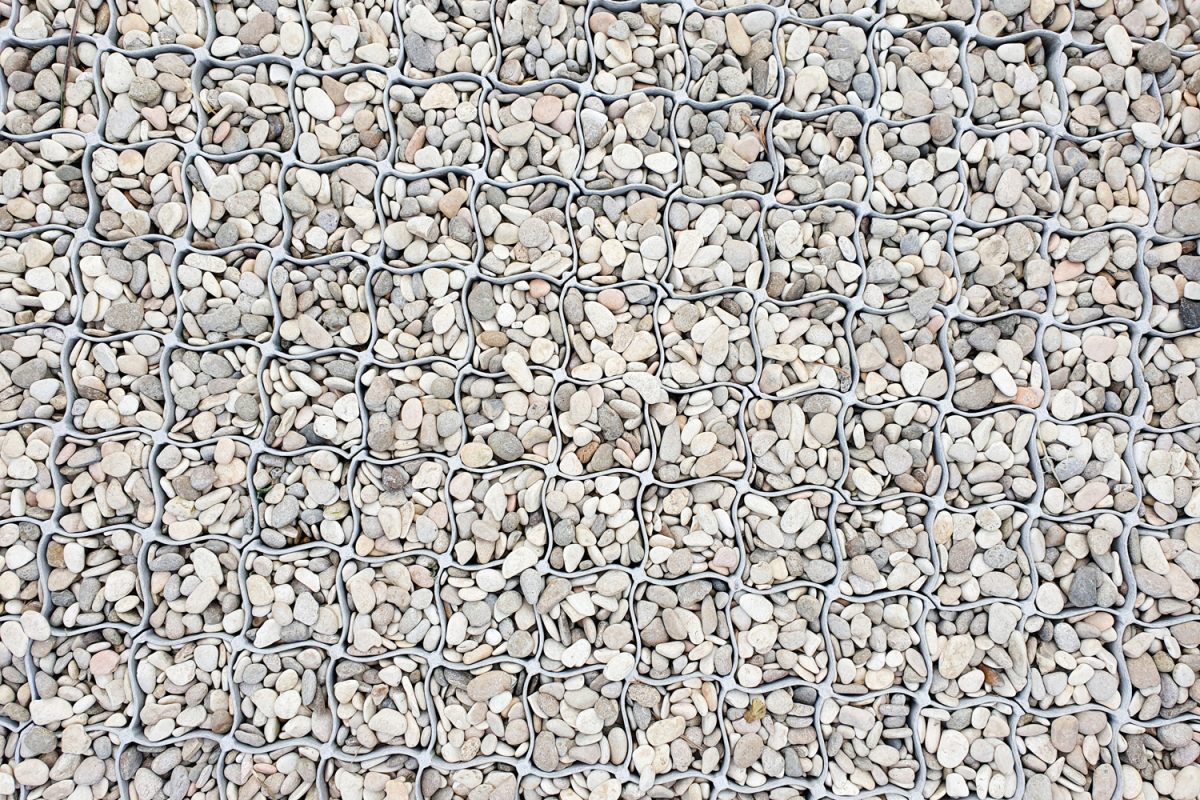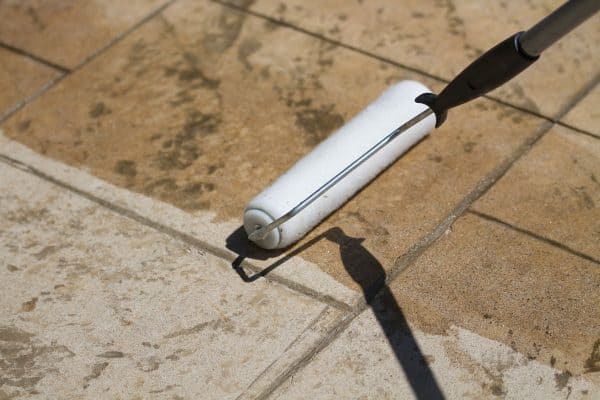Disclosure: We may get commissions for purchases made through links in this post.
A good driveway won't only enhance the property's curb appeal, but it should also provide the functionality needed for your cars. Take note that you can use different materials to take advantage of these benefits, such as gravel and crushed concrete. But is crushed concrete better than gravel for a driveway? We researched the answer to that question, and here's what we found.
Crushed concrete might be a better option than using gravel for a driveway in certain scenarios. However, gravel may also be superior in look and function to crushed concrete in specific settings.
Understanding the key differences between gravel and crushed concrete can help many property owners choose the best material for their driveways. Continue reading as we talk about the benefits and drawbacks of these materials for you to make an informed decision by the end of this post.
![Ground level view of a new car, showing the rear tyre and tread together with the alloy wheel - Is Crushed Concrete Better Than A Gravel Driveway [Pros & Cons Of Recycled Concrete]](https://pavingplatform.com/wp-content/uploads/2022/03/GROUND1-800x1200.png)
Which Is Better For A Driveway Gravel or Crushed Concrete?
Crushed concrete is a reusable material made of asphalt debris for different construction pathways like walkways and driveways. Another material used for driveways is gravel or crushed stone. Although both can create driveways, these two materials supply property owners with unique benefits and shortcomings.
Pros of Gravel

Permeable
Keep in mind that gravel is a group of rock fragments that don't typically promote a uniform look. However, this structure promotes penetrability for the driveway. So, water will go through it instead of pooling on top, preventing potential problems like mold and stains.
Easy to Maintain
Routine care is generally enough to keep the visual and functional properties of a gravel driveway. A gravel rake is typically sufficient to maintain this surface regularly. If potholes appear, they are pretty easy to repair.
Check out this bow rake for leveling gravel on Amazon.
Watch the video below if you're curious to see how to repair potholes on a gravel driveway:
Different Choices
Property owners can choose among different types of gravel for their driveways. Some relatively common examples are basalt, limestone, and sandstone. Other options exist wherein they glow in the dark, allowing drivers and pedestrians to see the driveway clearly at night without resorting to expensive lighting fixtures.
Check out these glow stones for driveways on Amazon.
DIY-Friendly Installation
Many gravel driveway installation procedures are typically less labor-intensive than setting their crushed concrete counterpart. Here's a quick look at the steps needed to set up a driveway with this material:
- Form the driveway’s path using stakes.
- Remove topsoil and/or grass from the area.
- Level the earth along the driveway’s path.
- Spread and compact the material.
- Add a layer of gravel to enhance the driveway's durability.
- Shape the gravel driveway until satisfied.
Assuming that the installer has already finished the necessary preparations and acquired the equipment for this project, it should only take about 3 hours to complete those steps. Note that the time to complete this operation may differ depending on your specific project's demands.
You can also watch the video below for a preview on how to lay a gravel driveway:
Cons of Gravel
Requires Top-Ups
Gravel's permeability often comes from its relatively loose nature. It also means that it can be susceptible to strong winds and heavy rainfall. So properties in areas experiencing wet or windy weather frequently may need to top-up their gravel driveways regularly.
Difficult to Snowplow
The relatively uneven surface provided by gravel makes it more challenging than other driveway material options to snowplow. Scraping or snowplowing a gravel driveway will often remove some of the material from the surface.
Pros of Crushed Concrete

Reasonably Inexpensive
Property owners usually only spend about $6 to $14 per ton of crushed concrete. In comparison, gravel typically requires buyers to spend approximately $10 to $50 per ton.
Eco-Friendly
Crushed concrete is typically a recyclable material. Homeowners may choose to break down and dispose of their crushed concrete driveways to certified recycling plants. These facilities will then pulverize the material, allowing other property owners to reuse it without it ending up in landfills.
Easy to Repair
Spot fixes on crushed concrete driveways don't typically demand expensive repair jobs. These operations also don't usually require professional services. Topping over the surface layer should be enough to repair many holes and ruts on these surfaces.
Watch the video below to see how to do quick repairs on concrete surfaces:
Cons of Crushed Concrete
Difficult to Install
Installing a concrete driveway is usually not a DIY-friendly job, unlike setting up this path using gravel. This project also often requires reasonably expensive equipment like a cement truck or wheelbarrow, which might increase the job's overhead. We will discuss the steps to pour concrete on a driveway by yourself in a later section of this post.
Little to No Permeability
If installed correctly, crushed concrete driveways have little to no penetrability. Although it means that this trait provides a property owner with a level surface, it also means that the driveway is at a higher-than-usual risk of contracting standing water. If left unchecked, this issue can lead to mosquitoes breeding and spreading in the driveway.
How Do You Pour A Concrete Driveway By Yourself?

Although not typically a DIY-friendly job, pouring a concrete driveway by yourself or with some assistance is possible. However, keep in mind that it may take more time and effort to complete than hiring professionals to complete this operation.
If you're still firm about your decision to install a concrete driveway in your property using DIY techniques, here's a quick summary of how to accomplish this feat:
What You’ll Need
- Shovel
- Wooden stakes
- String
- 2x4 wooden planks (as many as needed)
- Wire mesh
- Concrete leveling tool
Step-by-Step Guide
- Dig a few inches of soil in the area for the concrete driveway on your property.
- Mark the dug area with string and rope. Ensure that the string is level for these will serve as your guide.
- Create fencing for the concrete using the 2x4 wooden planks.
- Remove any grass, dirt, rocks, and other debris from inside the marked perimeter. Then, flatten the surface as much as you can to prevent unevenness from forming from the poured concrete.
- Backfill around the perimeter with some dirt. The additional soil should help push the poured concrete away from the rest of the yard.
- Reinforce the perimeter with wire mesh to help prevent the wind from moving the fencing.
- Pour the concrete into the area slowly and carefully. It's best to go about this step in sections and use a concrete leveling tool to flatten the driveway with each section poured.
- Once you cover the perimeter, lightly rinse the poured concrete with a garden hose. Then, use the leveling tool again on the surface to help remove any hot spots.
- Let the concrete dry and cure before removing the backfill and wooden planks surrounding the driveway.
Make sure to watch the video below to learn additional details that should help you complete this process with as minimal errors as possible:
What Is The Best Size Gravel For A Driveway?
There's no best or 'end-all' size gravel for every driveway. Instead, property owners should calculate the amount of this material needed to fit the unique dimensions of their driveways.
Achieve the correct amount of gravel to use by measuring the driveway. Make sure to have that value in cubic feet or yards. The reading acquired will be the quantity of gravel required for that surface.
Also, lot owners can achieve sturdy finishes for their gravel driveways using gravel options with different sizes for the layers. For instance, a #3 gravel is generally good for the base layer. Gravel #57 can then be an ideal addition as the middle layer. As for the finishing, a mixture of small stones and rock dust can be a good choice.

Final Words
Gravel can be a good option for a driveway in specific scenarios. On the other hand, crushed concrete has features and traits that may make it a better selection than gravel in some properties. Always take note of the pros and cons of these driveway materials mentioned above to ensure you gain value from your choice.
If you like what you read, don't forget to check out our other posts on driveways:
Are Recycled Rubber Pavers Good For Driveways? [A Comprehensive Review Of Pros & Cons]



![Vibrant Red Paver Stone Path, Can You Spray Paver Sealer? [How To Apply It]](https://pavingplatform.com/wp-content/uploads/2022/04/Vibrant-Red-Paver-Stone-Path-600x400.jpg)
![Properly laid out red pavers for a garden, Can You Tint Paver Sealer? [And How To]](https://pavingplatform.com/wp-content/uploads/2022/04/Properly-laid-out-red-pavers-for-a-garden-600x400.jpg)
